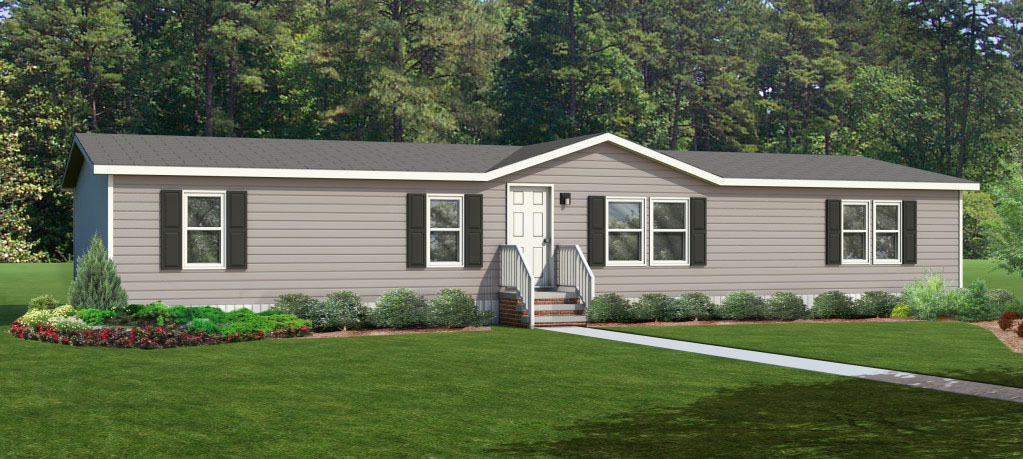Understanding the Difference Between Mobile Homes and Manufactured Homes
Understanding the Difference Between Mobile Homes and Manufactured Homes – Part 1 of 3

By Vern Meyer (VMeyer@Accurity.com)
It is common, even when talking with real estate professionals, to hear the term ‘mobile home’ used interchangeably with ‘manufactured home’ when these are separate and discrete concepts. Date built, HUD code, and perceptions are three key ways manufactured homes differ from mobile homes. In this article, we’ll discuss these differences to provide a clearer understanding of the difference between the two.
Date Built
Mobile homes and manufactured homes share a common lineage, which is why they are often confused. In the 1920s, the popularity of the automobile led to people creating trailers, named as such because these vehicles ‘trailed’ behind the truck or van that was pulling it. Trailers were popular with vacationers who wanted to camp on the go.
In the 1930s, manufacturers began to produce trailers on a mass scale in factories. Over time, they became bigger, longer, wider and more elaborate. They even became part of pop culture – many of us can remember Lucille Ball and Desi Arnaz in ‘The Long, Long Trailer’ (1953). Families eventually started using these ‘house trailers’ as permanent residences, and although they had wheels, they were typically not used for travel.
In the 1950s, ‘trailers’ started to gain a poor public reputation, so the industry decided to rename them, calling them mobile homes instead. These mobile homes were situated on property, but the wheels remained in place, and they were not permanently attached to that property (most had straps that were connected to anchors in the ground to help keep them in place in the event of very strong winds – these straps were sometimes referred to as “Hurricane Straps”). Even though the mobile home may have been ‘strapped’ to the ground, there weren’t considered to be real property. Mobile homes were assigned VIN numbers and they were financed the same as a car.
In 1976, the industry stepped in again. It was decided that because these recreational vehicles were often being used for permanent residences, stricter standards should be set. The reason for this change in policy is clear. The original concept for trailers (later called mobile homes) was to be able to make them portable. In order to do that, weight was a major concern. Many, if not most, mobile homes had ‘thin-wall’ construction. 1” x 1” or 2” by 2” construction with minimal insulation was the norm. Creating a national standard (HUD) ensured the quality of these structures that many people were using as permanent residences. With these new codes came another name change – from mobile homes to manufactured homes.
Therefore, purely from a date standpoint, the term ‘mobile home’ is only appropriate if the structure was built before June 15, 1976. If the home was built on, or after June 15, 1976, the correct term should be ‘manufactured home’.
HUD Code
The HUD code, enacted in 1976, is really what makes a manufactured home fundamentally different from a mobile home. The HUD code established federal standards for the building of manufactured housing. It involved regulating the construction and quality of all aspects of building a manufactured house, including:
- Design and construction
- Strength and durability
- Transportability
- Fire resistance
- Energy efficiency
- Overall quality
- Performance standards for all house systems, including electrical, plumbing, heating and air conditioning
It is important to note that before this time, these things were not federally regulated. The HUD code was a huge step forward in ensuring quality manufactured housing. Therefore, the term ‘mobile home’ refers to an unregulated construction pre-1976, and the term ‘manufactured home’ refers to a housing unit that is constructed post-1976 (June 15) following specific rules for design, durability and safety.
Perception
The final difference between mobile homes and manufactured homes is the difference in perception. We can see the influence of perception in the HUD code. At that time, mobile homes were perceived as low quality. The industry enacted code protects the owner and changes this perception.
When a property owner’s home is incorrectly referred to as a ‘mobile home’, they often take offense. It is often because of perception. Mobile homes are perceived as low quality, old, and linked to poverty. When the term ‘mobile home’ is used, it is not giving the manufactured home the credit it is due. Today’s manufactured homes are built according to very stringent building standards. They are functional, often beautiful, and sometimes even indistinguishable from site-built homes.
The change in perception is also impacting manufactured home financing. Mobile homes (pre-1976) were financed like a car (the owner received a title to the vehicle). Today, many lending institutions are providing conventional and government-insured financing plans on properties with manufactured homes that are the same as mortgages for properties with site-built homes.
By understanding these key differences, it is easy to see the terms ‘mobile home’ and ‘manufactured home’ are very distinct. When referring to a housing structure built within the past 40 years, it is correct to use the term manufactured home, and using the terms ‘mobile home’ and manufactured home’ correctly helps to avoid confusion and any negative connotation with mobile homes of the past.
In Part 2 of this conversation, we’ll talk about differences between manufactured homes and ‘modular homes’ and lending requirements for manufactured homes (Fannie Mae and government loan guarantee programs such as FHA, VA, USDA, Rural Utah, etc.). In Part 3, we’ll discuss specific inspection and reporting requirements.
In putting this blog together, I’ve tried to identify personal opinions and cite sources whenever possible. Your thoughtful comments and suggestions are always welcome. Thank you for reading. Vern
References: HUD, Cascade Lending, Fannie Mae (Selling Guide 09/26/2017)


Leave a Reply
Want to join the discussion?Feel free to contribute!